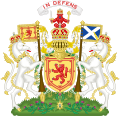The wolf has a special place in my heart because of what I went through at a particular time in my life. Floundering in a sea of self-doubt due to a betrayal in my marriage, I came across a book called “Women Who Run with Wolves,” by Clarissa Pinkola Estés. Here’s part of the blurb for her book: “Within every woman there lives a powerful force, filled with good instincts and passionate creativity. She is the Wild Woman, who represents the instinctual nature of women.
Okay, so I had the passionate creativity and I was a Wild Woman; I mean, I am bush baby, wild creature of Africa, after all. But what I didn’t have was good instincts. So I joined a group of women facilitated by a psychologist and we met once a week to discuss the principles of the book. Now, I’m not a joiner, and being raised in Africa where children were seen and not heard and definitely not encouraged to express themselves, I entered into this journey with these strangers, cautious and insecure.
But something shifted in me during that class which became the first step in my journey toward those good instincts. And then to as if to prove I’d chosen the right path, shortly after the class ended I spent a weekend up in Idyllwild, in the San Jacinto Mountains, not far from home with a girlfriend. There, in a kitschy little shop on the main drag, I saw this T-shirt with an image of wolf silk-screened on the front. The creature stared straight at me with eyes that spoke of instincts pure and true. I bought the T-shirt and actually wore it a couple of times. I don’t know when that stopped, but I do know that that image of the wolf along with the decision to rely on my inner compass guided me to that authentic self that had been there the entire time. It took time and many steps but it began with a wolf.













 Here’s a sweet story for you. After losing his parents, the three-year-old orangutan pictured above was so depressed he wouldn’t eat and didn’t respond to any medical treatment. The veterinarians thought he would surely die from sadness. The zoo keepers found an old sick dog on the grounds in the park at the zoo where the orangutan lived and took the dog to the animal treatment center. The dog arrived at the same time the orangutan was there being treated. The two lost souls met and have been inseparable ever since.
Here’s a sweet story for you. After losing his parents, the three-year-old orangutan pictured above was so depressed he wouldn’t eat and didn’t respond to any medical treatment. The veterinarians thought he would surely die from sadness. The zoo keepers found an old sick dog on the grounds in the park at the zoo where the orangutan lived and took the dog to the animal treatment center. The dog arrived at the same time the orangutan was there being treated. The two lost souls met and have been inseparable ever since.